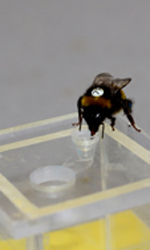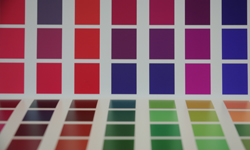Back to Projects

My initial interest on insect colour vision was triggered by the idea that flowers could use colour as an exploitation barrier. Bees, for instance, find it easier to detect flowers of certain colours. In a competitive world, bees cannot waste time looking for difficult-to-detect flowers if these same flowers are readily detected by other taxonomic groups, such as birds – the story is different if all pollinator groups find it difficult to find certain flowers: then, resources will accumulate in these flowers and it may become economically worthwhile to invest time looking for them.
After a couple of years working on the problem, it has become an interesting question in itself. Now I want to understand how colour is perceived, and what neural processes allow bees to distil colour perception from the information gathered by the retina. After a long excursion into the realms of behaviour and ecology, I may be closing the loop, returning to my origins: psychophysics and neurophysiology… Who knows!

Related publications